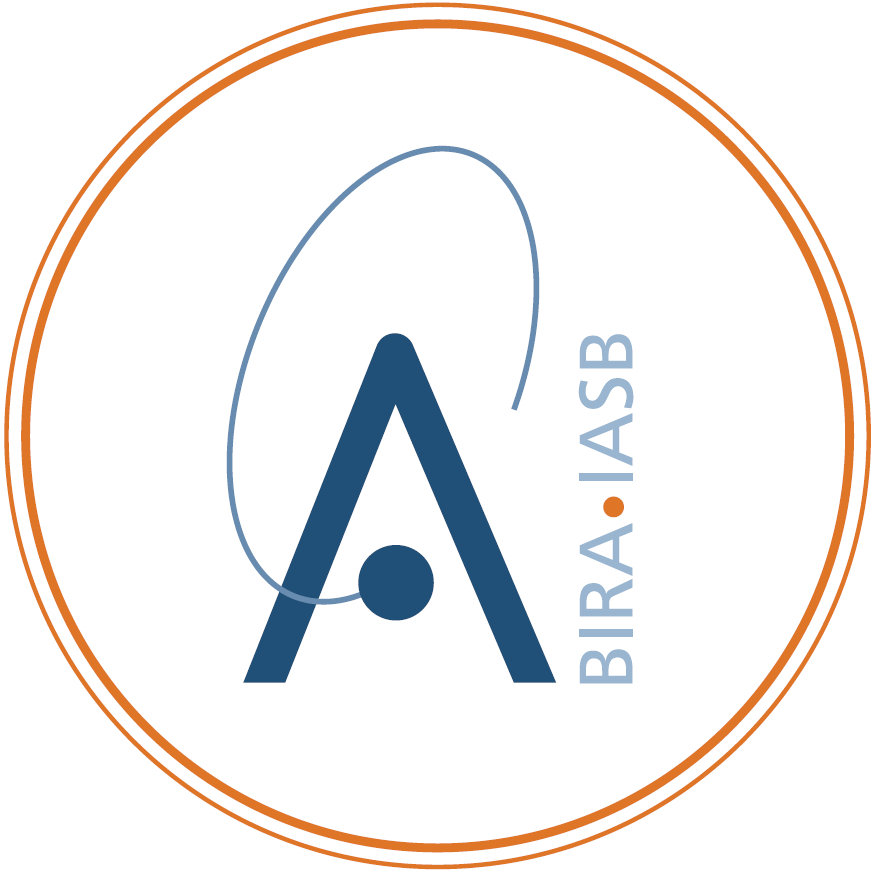
European Space Agency¶

Royal Belgian Institute for Aeronomy¶

um510 - select an internal field model¶
- subroutine um510(kint, year, lbint, kunit, ifail)¶
- Parameters:
kint [integer4,in] :: index of the geomagnetic field model [-2..4]
year [integer4,in] :: epoch of the geomagnetic field calculation express in year
lbint [character32,out] :: label of the geomagnetic field model
kunit [integer4,in] :: file unit for the summary table (see note of
ut990()ifail [integer4,out] :: error flag (see Diagnostics)
Description¶
The subroutine
um510()may be used to initialize the geomagnetic field description inside the common block UC140. Thekintargument allows to choose between four models as listed below.
kint |
Field Model |
Remarks |
|---|---|---|
kint |
Geomagnetic field model |
Remarks |
0 |
DGRF/IGRF 1900-2015 |
|
1 |
Jensen & Cain (1962) |
fixed to epoch 1960 |
-1 |
Jensen & Cain (1962) |
fixed to epoch 1960 and corrected for the SAA westward drift |
2 |
GSFC 12/66 |
|
-2 |
GSFC 12/66 |
fixed to epoch 1970 and corrected for the SAA westward drift |
3 |
Dipole magnetic field |
|
4 |
DGRF/IGRF 1900-2015 |
deprecated use the Kluge algorithm to evaluate the geomagnetic field |
The dipole magnetic field model is obtained from the DGRF/IGRF model by a truncation to the second order of the expansion coefficient. The year argument specifies the epoch used to evaluate the geomagnetic field model. The Jensen & Cain model does not depend on time and has its epoch fixed to 1960. When kunit is greater than zero, a summary table is written by the subroutine. As result, the lbint argument contains a string with the label of the selected internal magnetic field model. The Jensen & Cain model has been used to produce the NASA trapped radiation belt models AP-8 MIN, AE-8 MIN and AE-8 MAX. The GSFC 12/66 model, updated to 1970, has been used to generate AP-8 MAX model. Since these NASA models were built more than twenty years ago, the location of the South Atlantic Anomaly (SAA) has shifted considerably to the West compared to its location predicted by the two old magnetic field models, due to the secular variation of the geomagnetic field distribution. When the
kintargument is set to -1 or -2, the effect of this drift will be compensated by applying an eastward rotation to the geographic coordinates before the evaluation of the internal magnetic field.
References¶
Cain, J.C., Hendricks, S.J., Langel, R.A. and Hudson, W.V., A proposed model for the international geomagnetic reference field-1965, J.Geomag.Geoelectr. 19 (1967) 335-355
Heynderickx, D., Comparison between methods to compensate for the secular motion of the south atlantic anomaly, Aeronomica Acta 385 (1994)
Jensen, D.C. and Cain, J.C., An interim geomagnetic field, JGR 67 (1962) 3568
History¶
In version 2.02 and earlier the string returned by argument lbint is not correctly copied in the argument mint.label of common block UC140. In version 2.22 and earlier, problems have been discovered in subroutine
um510()when the argumentkintis set to 4 (evaluation of DGRF/IGRF by the Kluge algorithm). This option is now disabled
Diagnostics¶
-51001, invalid geomagnetic field model index
-51002, geomagnetic field uncorrectly loaded
-51003, error on output device
Common Blocks¶
Dependencies¶
Called by¶
None
Calls¶
See also¶
Reported Bugs¶
None
Examples¶
Ex #4. Find the point with the lowest altitude on a magnetic drift shell
T.03 - How to customize the magnetic field model used by the library ?
T.04 - Why are Roederer’s L* and McIlwain’s L parameters different ?
UNILIB/tags/v3.02
